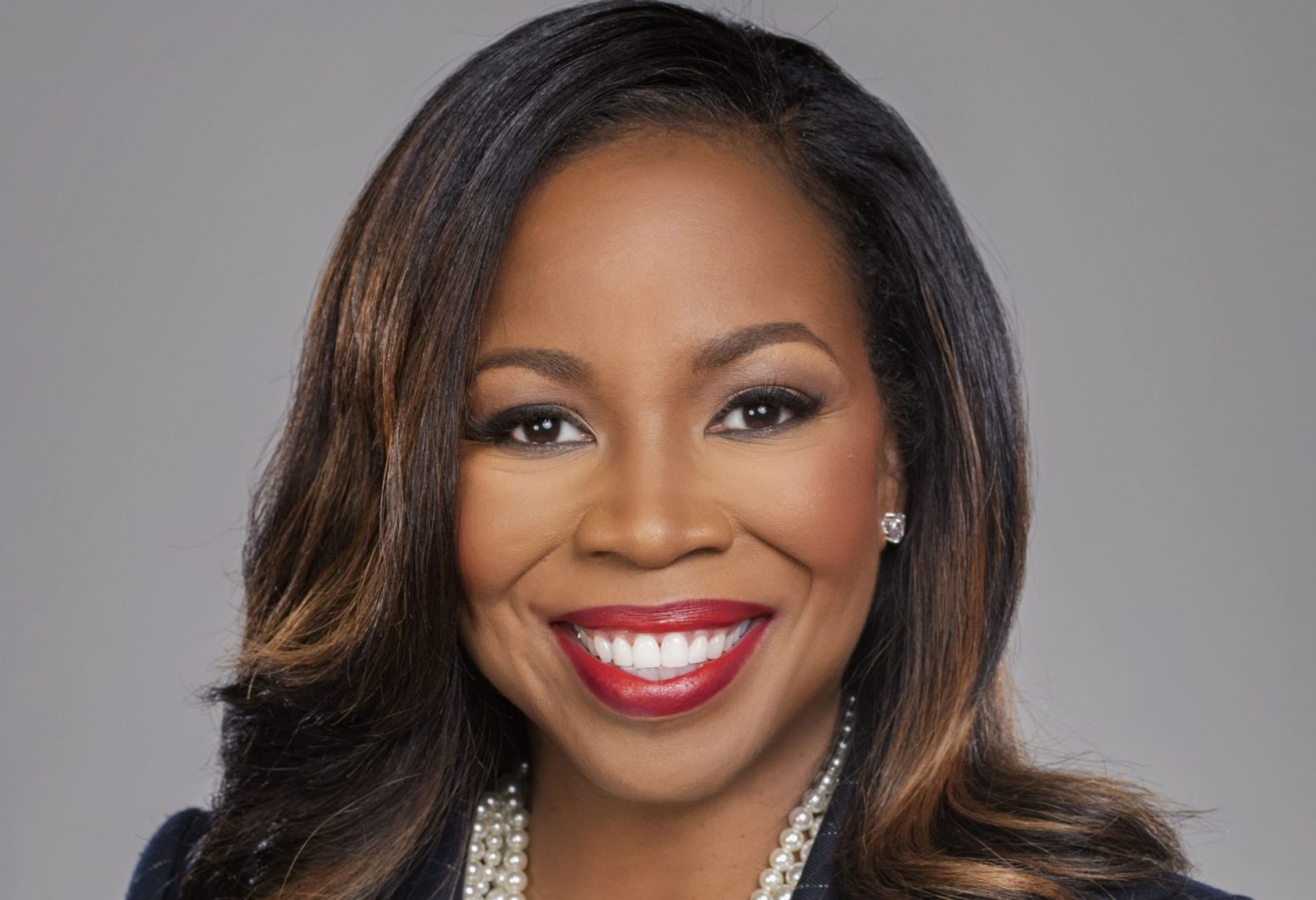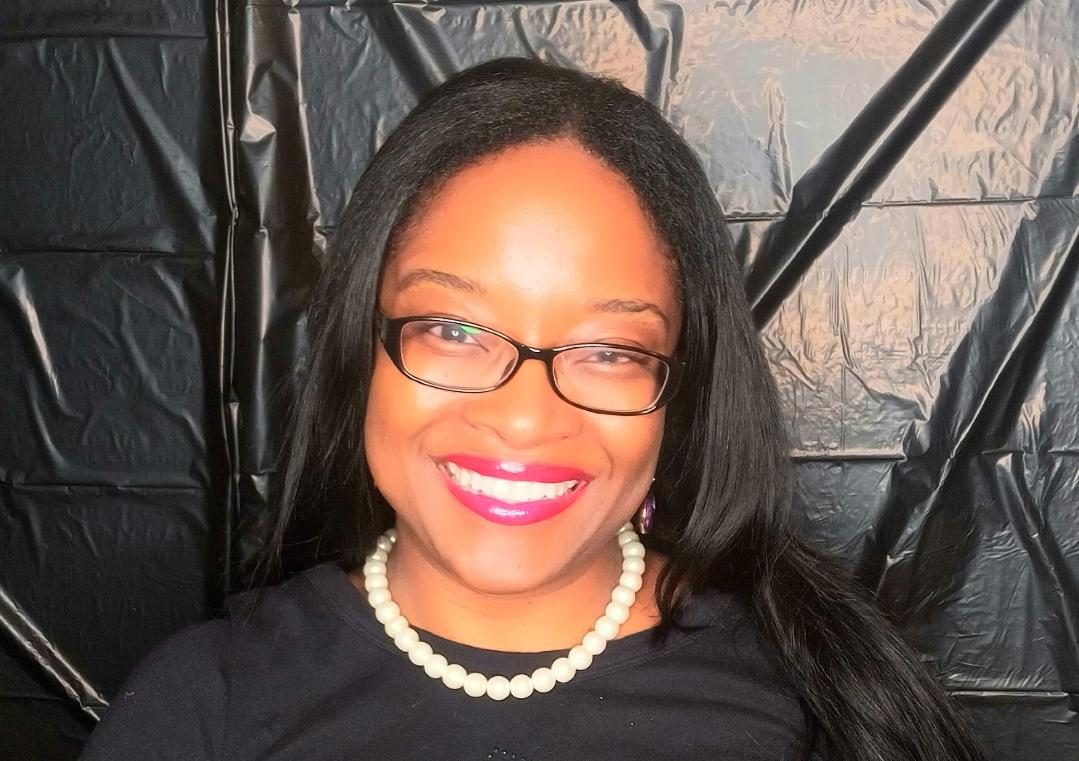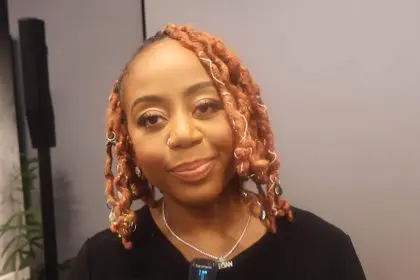They call her Peppur, The “Hot” One … and that’s because she is. A brilliant, satirical writer, a budding director, dynamic actor and tenacious producer, Peppur Chambers continually proves she has the chops to write, direct and produce something gorgeous.
In 2005, she wrote, produced and performed in a 26-minute 1940s styled dinner-theater show, Harlem’s Night: A Cabaret Story performed by the Brown Betties which blossomed into a 75-minute mini-musical with eight characters. This burlesque bedtime story tells the tale of a woman looking for love in all the wrong places. Recognizing that The Betties, four sultry, sassy, and sophisticated women (including herself) were becoming the selling point of the show, she chose to capitalize on it and develop The Brown Betties® into a trademarked lifestyle brand. The Brown Betties® brand now includes a book: The Brown Betties Guide: How To Look For Love In All The Wrong Places, the Be Your Own Bettie (BYOB) Empowerment workshops; Bettie Body workout/dance classes; Brown Betties Gazette online magazine and even Brown Bettie greeting cards.
Peppur is currently successfully juggling a handful of projects that include a new book, Harlem’s Awakening, a Web series, a production company with her brothers, a tent-pole project titled The Build UP, and a play called Dick & Jayne Get a Life.
While each of her projects is considerably different, she burns to tell the truth from an alternative, yet humorous perspective, all while sticking to one theme (so far) and that is: Love. Peppur is a graduate of Marquette University (BA Advertising & Marketing), was a former Chicago Bulls and Milwaukee Bucks Dancer; is able to wiggle her ears and currently lives in Los Angeles with her understanding cat, Iris.
Her new book, Harlem’s Awakening, is now out via Black Hill Press and Amazon.com
Tell us about Harlem’s Awakening.
Harlem’s Awakening is a 1940’s novella about a young woman who was abducted and sold to a speakeasy brothel. She must use her beauty as a weapon to empower herself towards not just freedom but towards becoming the strong woman she was always meant to be.
In the book, you touch on many different topics including African American wealth in that era, the racial change of Harlem, and even the sex trade of the day. Tell us a little more about those things.
In another life, I was probably a history major or perhaps just lived in the 40s. I’m slightly obsessed with knowing what catalysts caused certain historical elements. For example, there is a story within our family that at one point, we had money, but it was lost in gambling debts. I’m haunted by not knowing more about that, so I used that idea of wealth as a base for my character. We also know that there were wealthy black bankers and black communities like the Black Wall Street in early 1900s and it is important to acknowledge these facts…and have fun with them.
Regarding the racial change of Harlem, we see how the area changes from white to black and now back to white and it is fascinating to me; largely because I had a city planning class in college (Marquette University) that inspired me to ask questions about how and why neighborhoods develop and sometimes disappear. In this case, I researched and learned about black real estate entrepreneur, Philip A. Payton, Jr. who is known as “the Godfather of Harlem” and was instrumental in bringing many blacks to Harlem.
The sex trade terrifies me. It is an issue, which needs as much exposure as possible to stop it. This is my way of shining a light in the dark.
Who are the Brown Betties and how are they connected to Harlem’s Awakening?
The Brown Betties are the four women of the 1940s dinner-theater show I created. We sing, dance, act and sizzle with a hint of burlesque. In 2005, when the Betties were born, I knew I wanted to create a lifestyle brand that empowered women and also lived off stage. This trademarked brand needed many platforms to reach women…so we have a few different platforms like the workshops, the cabaret, and the work out classes, the web series, and more. The novella is the pre-story to how these lovely Betties came to be and introduces our main character, Harlem.
You’ve done a few projects centered around black culture of the 20’s, 30’s and 40’s. Would you say you have a fascination with that era?
YES! I was reincarnated. I think I met an early demise in the 30’s or 40’s and needed to come back. In fact, a palm reader told me I was a harlot in another life. Soooo…. (Hunches shoulders). Also, my mom has a strong love for all things vintage, and she has passed that love on to me.
What is your creative process like?
Ohhhh…Well… Don’t laugh. Sometimes I do go into a sort of trance and the image or the words, or the idea kind of seeps into my brain, materializes visually and then leaps onto paper. This happens no matter if I’m writing a play or creating a costume idea for the cabaret show or brainstorming how to get the Betties to the masses 🙂 My creative process also includes collaboration. Nothing is done alone! At L.A.’s Pan African Film Festival last month, I created a panel: “When Collaboration Is Your Little Black Dress” and I invited six amazing women to the panel with whom I’ve worked to create magic over the years. They are Nicole Adelman [Chicagoan!], Morenike Evans, Kelly V. Dolan [Chicagoan!], Hannah Steadman, Tanya Alexander and Tina McDowelle. These women are writers, directors, producers, choreographers, poets, singers, dancers, actors and own their own businesses. Google them. They are fierce and have each brought at least one of my creative projects to light.
How do you use social media to your advantage?
I’m still tackling and mastering this one! I use Facebook and Twitter to brand projects. I manage @dickandjayne (my play), @brownbettie, @thebrownbetties, @peppurthehotone and @threepeasprod (family production company) on Twitter. On FB I manage Dick & Jayne, Betties, my personal page, Three Peas and Reparations (my short film).
I’d love to do better as I know what to do but don’t always have the time to do so and be consistent, which we know is a major key to social media success. My challenge now is using @peppurthehotone for personal and writing projects (my personal brand), while using @brownbettie for Betties and Harlem’s Awakening. Sometimes I mess up 🙂
What accomplishment are you most proud of?
Definitely the novella! It’s an eight-year dream come true! I have to send a big thank you to my publisher family, Black Hill Press (www.blackhillpress.com) and my fantastic, wise editor, Lilliam Rivera!
Who inspires you?
My family; Nora Ephron; Michael Jordan; Malcolm Gladwell; The Weinstein Brothers; Oprah of course (and not just because I was a guest on the show). My book club, “The Ladies of Literature Book Club” and all the Brown Betties past and present (Marliss Amiea, Keena Ferguson, Christy Gamble, Danielle Lewis, Crescent Muhammad, Kalia Silva, Camille Cardinale and Taylor Frelot). I enjoy medium-rare burgers with bleu cheese, whiskey and red lipstick.
Any favorite affirmations?
If you build it, they will come.
What do you do to unwind?
I like to have my friends over to the Swanky Lounge (corner) in my apartment, make cocktails, use my vintage martini shaker and glassware, and throw on a 1950 cocktail dress.
What’s next for Peppur Chambers?
My next major career goal is to be sitting at the Arclight movie theater on Sunset Boulevard watching the credits roll to “Harlem’s Awakening” while screaming, laughing, dancing and crying with my friends and family over an incredible job very, very well-done.
One last thing you want people to know?
If I may be so bold, “Harlem’s Awakening” will be performed as a live, experimental, sultry reading at the Prague Fringe Festival this coming May. We are the only show accepted from not just L.A. but the state of California! This is a great honor. We are fundraising and could use the support to get the production there! “Harlem’s Awakening” Prague Fringe Festival donation page.
For more information on Peppur, you can reach her via the following networks: Her website, blog, Facebook, and Twitter.


















